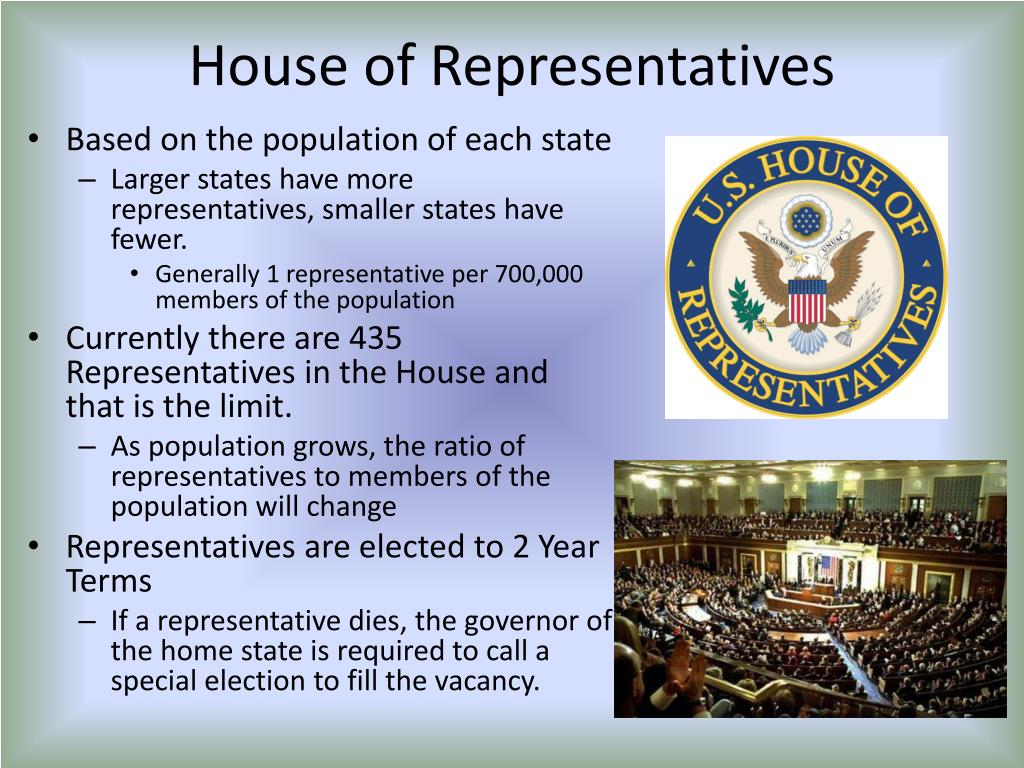Table Of Content

After a census is taken (in a year ending in 0), the year ending in 2 is the first year in which elections for U.S. House districts are based on that census (with the Congress based on those districts starting its term on the following January 3). As there is no legislation at the federal level mandating one particular system for elections to the House, systems are set at the state level. As of 2022, first-past-the-post or plurality voting is adopted in 46 states, ranked-choice or instant-runoff voting in two states (Alaska and Maine), and two-round system in two states (Georgia and Mississippi). Elected representatives serve a two-year term, with no term limit. The number of voting representatives in the House is fixed by law at no more than 435, proportionally representing the population of the 50 states.
Tenure of Senators
Each state gets a different number of representatives based on the total population. California is the nation’s most populous state and has 52 representatives. There are 212 Democrats officially in the House of Representatives. But that number will be 213 once Tom Suozzi is sworn in after winning the special election in New York to replace Republican George Santos. The Republican House majority leader is Louisiana Rep. Steve Scalise.
Non-voting delegates
Prior to the election, the Republican Party had the majority in the U.S. Republicans held 246 seats compared to Democrats' 186 seats, while three seats were vacant. The Republican Party's majority was slightly reduced in 2016, as Democrats picked up six seats. Besides the representative from each state, there are a small number of delegates and a resident commission. The approval of the Senate and the House of Representatives is required for a bill to become law.

House passes key foreign aid package
Rep. Mike Johnson, the newly-elected Speaker of the House, is also a Louisiana Republican. The House has 435 members, the number representing each state is determined by population. Apportionment is the process of dividing the 435 memberships, or seats, in the U.S.
How the House elects a speaker - WBAL TV Baltimore
How the House elects a speaker.
Posted: Wed, 04 Oct 2023 07:00:00 GMT [source]
Each considers bills and issues and recommends measures for consideration by the House. Committees also have oversight responsibilities to monitor agencies, programs, and activities within their jurisdictions, and in some cases in areas that cut across committee jurisdictions. In 1941, Congress permanently adopted the “Method of Equal Proportion” to determine how many representatives each state is apportioned.
Members of The House of Representatives, 117th Congress
One amendment adopted during debate would express support for ensuring security assistance in the bill gets to the Philippines. Under the rule for floor debate, there were no amendments allowed on the Israel aid bill. The Ukraine aid bill came to the floor after months of delay and despite staunch opposition from the hard right, including a threat from Rep. Marjorie Taylor Greene to call a vote to oust House Speaker Mike Johnson if he allowed such a vote. Zakharova said that in addition to the package's "military aid to the Kyiv regime," the bills would support Taiwan's "interference in China’s internal affairs" and allow Israel to continue "a direct path toward escalating unprecedented aggravation in the region." House lawmakers have once again passed legislation that could lead to a nationwide TikTok ban, renewing a massive threat to the company’s US operations.
Apportionment
For most of the House's history, however, states did not lose representation after the national head count's results were released. Generally speaking, as the country's census numbers grew, so did the size of the House since it was first established at 65 seats by the Constitution before the first U.S. count in 1790. While the House did temporarily add two seats after Alaska and Hawaii became states in 1959, a law passed in 1929 has set up that de facto cap to representation. Learn more about the history of the majority and minority leaders from the Office of the Clerk.
That wasn’t enough to tamp down criticism from some in the House GOP. Among the dissenters were Rep. Jamaal Bowman of Yonkers, a critic of Israel's war in Gaza since the Oct. 7 Hamas attack. Late Friday, Schumer said the Senate was working to get unanimous agreement to move quickly to vote on the foreign aid legislation. “We are working on an agreement for consideration of the supplemental,” he said on the Senate floor. "At this critical inflection point, they came together to answer history’s call, passing urgently-needed national security legislation that I have fought for months to secure," he said.
Republican Jim Jordan keeps up floundering fight to be US House Speaker - Reuters
Republican Jim Jordan keeps up floundering fight to be US House Speaker.
Posted: Thu, 19 Oct 2023 07:00:00 GMT [source]
Still, 37 “no” votes, while a break from Washington’s ironclad support for the Jewish state, fell short of the opposition bloc progressives had hoped to muster. Thirty-nine Democrats had voted “no” on Friday on the rule to allow the foreign aid package to come to the House floor, a target that progressives just missed on Saturday on the Israel bill. Fourteen of those Democrats voted on Saturday in favor of aid to Israel, while 12 Democrats who voted to allow the package on the floor on Friday then cast votes against the funding itself. The late 19th and early 20th centuries also saw a dramatic increase in the power of the speaker of the House. The rise of the speaker's influence began in the 1890s, during the tenure of Republican Thomas Brackett Reed. While the minority leader was the head of the minority party, the majority leader remained subordinate to the speaker.
The House is also served by several officials who are not members. The House's chief such officer is the clerk, who maintains public records, prepares documents, and oversees junior officials, including pages until the discontinuation of House pages in 2011. The clerk also presides over the House at the beginning of each new Congress pending the election of a speaker. Another officer is the chief administrative officer, responsible for the day-to-day administrative support to the House of Representatives. In the instance when the presidency and both Houses of Congress are controlled by one party, the speaker normally takes a low profile and defers to the president.
That process, known as reapportionment, occurs every 10 years after the decennial population count conducted by the U.S. The first House of Representatives in 1789 had only 65 members. The number of seats in the House was expanded to 105 members after the 1790 Census, and then to 142 members after the 1800 headcount. The law that set the current number of seats at 435 took effect in 1913. But it isn't the reason the number of representatives has been stuck there. The House of Representatives originally comprised 59 members.

"Congress has the authority to deal with this anytime," Anderson says. That's because, for the most part, there is a number that has not changed for more than a century — the 435 seats for the House's voting members. House of Representatives, the size of which has stayed at 435 voting members for decades. Use the Find Your Representative box in the banner of this site to identify your representative, then use the contact form to share your thoughts. Get answers to frequently asked questions about committees from the Clerk of the House.















